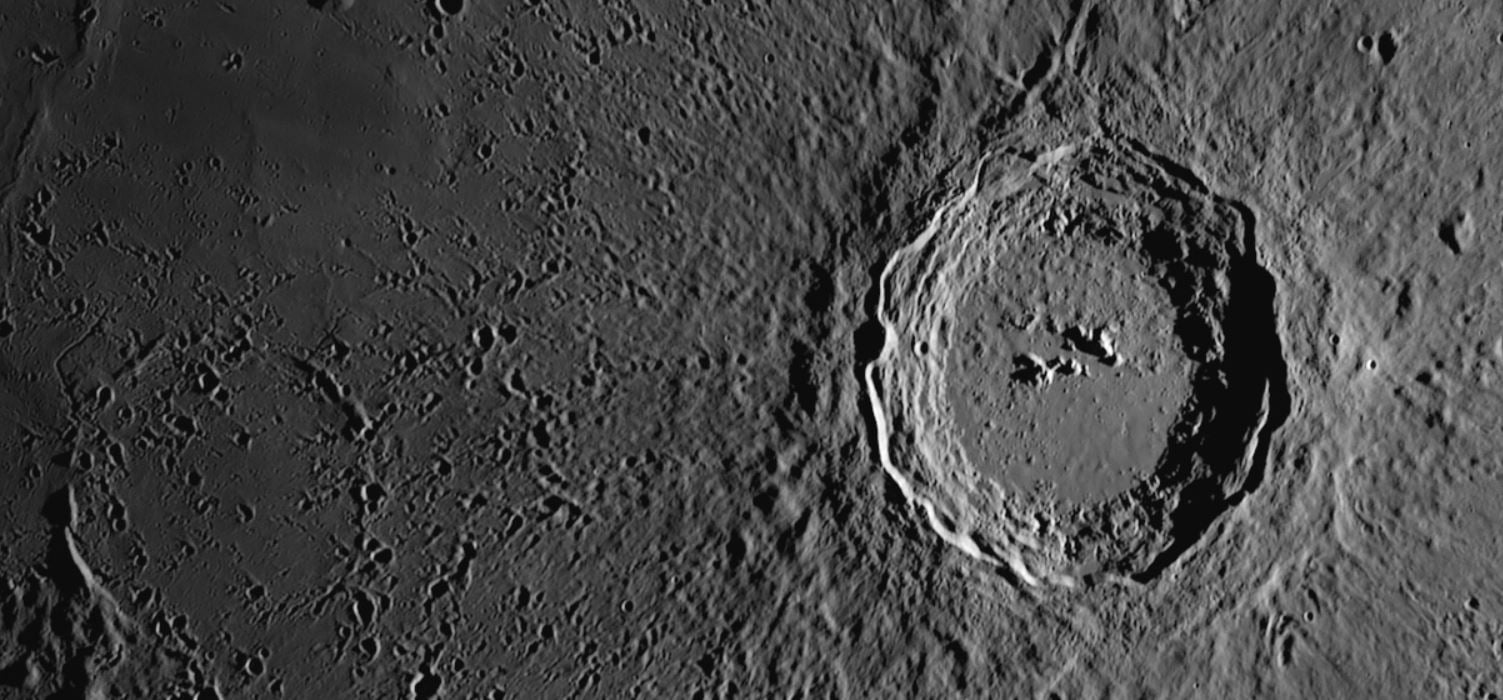Who doesn't love to gaze at the Moon on a clear night? But astrophotographer
Thierry Legault
now taken Moon-gazing to new heights. Legault traveled to the Alps in August and set up his Celestron C14 Edge HD and ZWO ASI1600MM camera. The results are absolutely stunning.
"These are the largest and sharpest quarters ever," Legault said via email, adding that he created mosaic images of 10 fields for a definition of
150 million pixels
!
Above you can see incredible detail in the 58 mile-wide (93 km) impact crater Copernicus.
Below is a lunar quarter taken on August 24, 2016:
[caption id="attachment_131825" align="aligncenter" width="500"]
Image of the Moon taken on August 24, 2016 from the Alps. Credit and copyright: Thierry Legault. Used by permission. [/caption]
Legault has been known to travel wherever it takes to get the best shots, for example traveling through Germany, France and Spain
to capture shots of space shuttle Endeavour on its final mission
, or finding the best locations for stunning and sometimes ground-breaking shots of the International Space Station
crossing the Sun
or
Moon,
or views of
spy satellites in orbit
.
In his book, "
Astrophotography
," Legault said that for clear close-ups of the Moon, good atmospheric conditions are a must, as well as having a finely tuned or collimated telescope. Below is a close-up view of Triesnecker crater and the surrounding region near the central part of the Moon's near side, including sharp view of the rilles.
[caption id="attachment_131824" align="aligncenter" width="580"]
Triesnecker crater in the central part of the Moon's near side is 26 km in diameter and 2.7 km deep. A system of rilles can also be seen. Credit and copyright: Thierry Legault. Used by permission. [/caption]
For processing these images Legault used AutoStakkert!2 (AS!2), PTGui stitching software and Photoshop.
You can see more of these stunning shots at
Legault's website
, where he says he'll have posters of these images available soon.
Of course, you can try seeing these features on the Moon yourself. Even binoculars or a small telescope can provide wonderful views of our closest companion in space. An upcoming full Moon (Super Moon!) on November 14, 2016, will feature the closest full Moon (356,509 kilometers away) until November 25, 2034 (356,448 kilometers away.)
Our thanks to Thierry Legault for sharing these wonderful new images of the Moon!
 Universe Today
Universe Today
